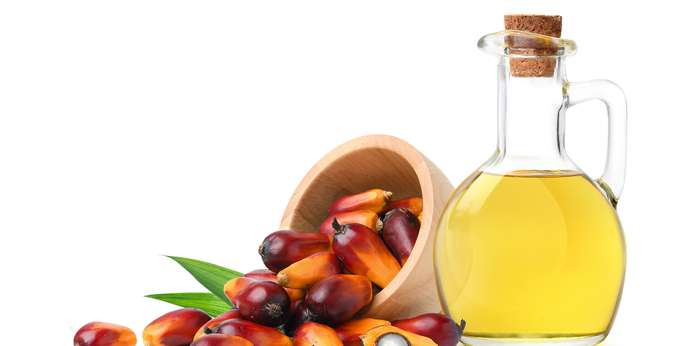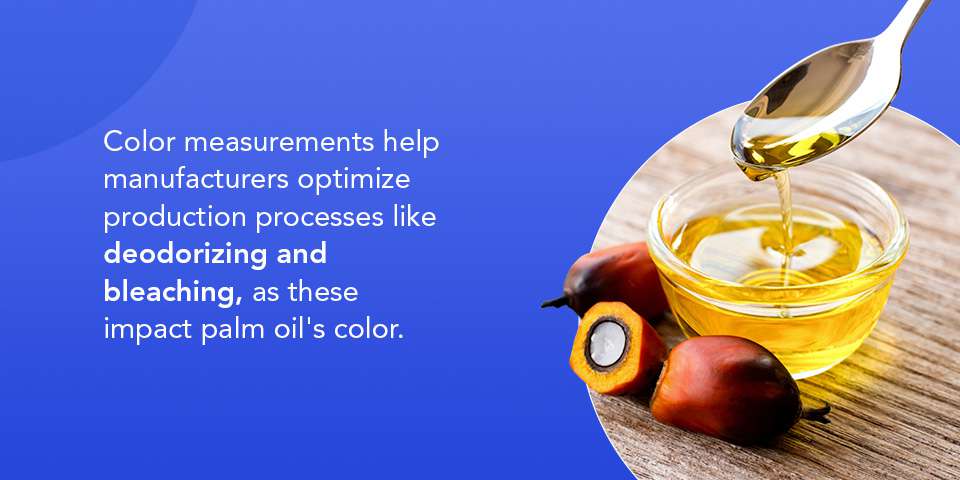
Palm oil is one of the most common vegetable oils in the world. Its popularity in various products means palm oil manufacturers must meet strict color standards. Spectrophotometers are the ideal color measurement solution for palm oil.

Palm oil is one of the most common vegetable oils in the world. Its popularity in various products means palm oil manufacturers must meet strict color standards. Spectrophotometers are the ideal color measurement solution for palm oil.
Palm oil is a high-quality product used in many applications. Palm oil is the world's most consumed vegetable oil, as most of its applications are for edible oils.
This versatile oil is a common ingredient in many types of packaged products, such as:
Palm oil is used for these applications because it remains semi-solid at room temperature, makes food smooth and creamy, cleanses hair, and is inexpensive.
Palm oil and its derivatives have many names on ingredient labels, including:
Since 2013, palm oil has had the highest production volume among the major vegetable oil types, with production increasing yearly. In the 2021 to 2022 crop year, palm oil production reached 75.5 million metric tons.
As production has increased, worldwide consumption of palm oil has gone up as well. While palm oil usage was 59.4 million metric tons in 2015 to 2016, it reached 73.9 million metric tons in 2021 to 2022.
The production of palm oil has increased in recent years for several reasons, including:
Considering the growing demand and production of palm oil, palm oil manufacturers need color and appearance measurements to verify product quality. Spectrophotometers that measure both color and turbidity simultaneously are the best in the market for evaluating the color and appearance of palm oil. These measurements help manufacturers optimize production processes like deodorizing, bleaching, and filtering, as these impact palm oil's color and visual appearance. Since consumers select products by color, these tools help palm oil manufacturers meet consumer expectations and FDA requirements. Spectrophotometers are also being used to identify palm oil that has been adulterated with cheap fillers trying to pass as high-quality palm oil.

HunterLab is a pioneer in color measurement solutions for palm oil. Since 1956, we have offered some of the market's leading spectrophotometer solutions for edible oils, food products, and beyond. The HunterLab Vista is the only spectrophotometer in the industry that measures color and haze simultaneously and provides full-spectrum analysis to identify counterfeits.
Browse our spectrophotometers for palm oil to explore the different solutions for this industry, and connect with our team for more information.
Mr. Philips has spent the last 30 years in product development and management, technical sales, marketing, and business development in several industries. Today, he is the global market development manager for HunterLab, focused on understanding customer needs, providing appropriate solutions and education, and helping to solve customer color challenges across these industries and cultures.LinkedIn